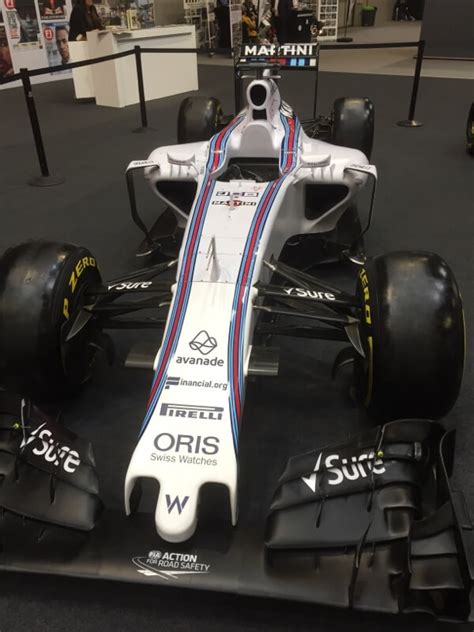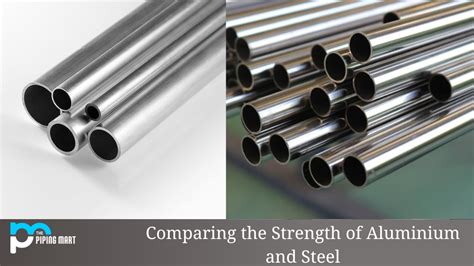formula one car chassis outer metal The first Formula One car to be raced that incorporated composite material in its chassis was the 1965 McLaren M2A, which featured panels of Mallite – a composite formed of aluminium . There is an under ground junction box in the middle of one of the lanes and is full of wires that are spliced. The box is full of water and when we turn the breakers on you can hear .
0 · formula one monocoque cars
1 · formula one aluminum vs steel
I'm installing an underground feeder between a main service panel in a cabin and a sub-panel in a detached shop. The service will be 240V / 50A. I'm considering using 4-4-4-4 aluminum URD direct burial cable, spliced onto 6/3 NM-B cable in junction boxes at each end.
formula one monocoque cars
Producing a monocoque chassis for a Formula One car is a meticulous process, demanding absolute precision. In this deep dive, we’ll explore the monocoque’s evolution, anatomy, materials, manufacturing .
In Formula 1, monocoque refers to the “survival cell” that protects the Formula 1 car driver. The cell is made from carbon fibre reinforced composites and is virtually indestructible. The monocoque, despite being strong, is also .The monocoque chassis. A Formula One car is a single-seat, open cockpit, open-wheel racing car with substantial front and rear wings, and an engine positioned behind the driver. The .The first Formula One car to be raced that incorporated composite material in its chassis was the 1965 McLaren M2A, which featured panels of Mallite – a composite formed of aluminium .
acp metal sheet
formula one aluminum vs steel
The chassis is the backbone of any Formula 1 car, providing the structural support and aerodynamics necessary for speed and performance. Through meticulous calculations, designers consider every detail of the chassis design, as their .
Most model parts are now made with rapid prototyping and 3D printing, with the wings made of metal. In the tunnel, the car is bolted to a central spine and a fan blows air over it with a belt .Even highly sophisticated Formula 1 chassis (actually, Formula 1 has monocoque structure) flex, and sometime some limited and controlled flexing is built in the car. The range of chassis stiffness has varied greatly over the years. Basic chassis .A monocoque is a type of construction used in Formula 1 racing, which refers to the main structure of the car that serves as the chassis. It is essentially a one-piece structure that is designed to be both strong and lightweight.Unlike a common tubular longeron car chassis, F1 chassis are far closer to fighter jet cockpits. Here, the skin provides the stiffness and strength, employing similar concepts to the force-spreading shape of a chicken egg, or a bridge arch.
Could be, but not necessarily, having a lot of water-to-metal and metal-to-air contact is crucial. I cannot account for F1 cars, but in my Formula SAE team, the radiators we designed weigh 900g each, with a water capacity of ca. 260ml. So our empty radiator weighs more than three times the .
The Evolution of Composites in Formula 1. The evolution of composites in Formula 1 began in the 1960s with the introduction of simple fibreglass parts. In 1962, Jim Hall and Hap Sharp designed the Chaparral 2, . Formula 1 is quite unique. There are few other examples of sports where intense speed, high skill and engineering are intermixed so completely. So much so that the materials used on these cars are at the very limit of what’s possible in material science today. With new designs in the works to meet the new requirements of the 2022 series, Samir Jaber, .Apr, 2019 Category: Automotive. Formula One (F1) is the world’s most famous motor racing sport, with around 10% of the world’s population following the races and teams.. 2019 marks the 70 th Formula One World Championship season, which began with Lewis Hamilton defending his title as the World Drivers’ Champion, after winning his fifth championship at the 2018 Mexican .
It is attached directly to the rear of this unit by high strength metal studs (Fig. 2). Download: Download full-size image; Fig. 2. . The “primary structure” of a Formula 1 car consists of chassis, engine and gearbox. The secondary . The chassis’ inner and outer skins typically consist of a number of “general plies” oriented at ± . Chassis-This part is regarded as the heart and backbone of the formula one car. The chassis holds the significant components bound on it, such as axils, wheels, and the electrical system. It serves as the carrying unit of the vehicle, which mounts the entire load. The cars have monocoque (single shell) production and designing. The whole car .Formula One (F1) is arguably the most famous motor racing sport in the world, with almost 10% of the world's population following the races. Due to the fierce competition within the sport, coupled with the remarkable physical strain the vehicles are put under during a race (sometimes hitting speeds of up to to 350 km/h), the cars need to be constructed using the most cutting edge .
acadian style house with metal roof
DESIGN OF FORMULA STUDENT RACE CAR CHASSIS UNDERGRADUATE RESEARCH PROJECT REPORT Submitted by ALPEREN KALE MECHANICAL ENGINEERING DEPARTMENT HACETTEPE UNIVERSITY JUNE 2016 . It also gives the vehicle the outer shape of it. These type of chassis are made of composite materials. . also known as shielded .
One look at the 1974 Tyrrell 007 chassis' front suspension produced a giant smile; all that's right with that grand prix era was represented in a maze of hand-formed metal. Media Platforms Design Team
As Williams brought the topic front and centre, and team members yet again pushed through the pain to get a second damaged chassis sorted for the Chinese Grand Prix, there was no better time for team principal James Vowles to talk us through exactly what this kind of job entails: starting with the moment the mangled car gets back to the garage at the circuit.
Commercial design software CATIA V5 is used to design all the monocoque chassis for the FS caraccording to the provided SOLIDWORKS 2016 space frame model of Coventry University's FS car, hence .Table 3 - Baseline Steel Tubing Requirements ITEM or APPLICATION OUTSIDE DIMENSION x WALL THICKNESS Round 1.0 inch (25.4 mm) x 0.095 inch Main & Front Hoops, (2.4 mm) or Round 25.0 mm x 2.50 mm Shoulder Harness Mounting Bar metric Round 1.0 inch (25.4 mm) x 0.065 inch Side Impact Structure, Front Bulkhead, Roll Hoop Bracing, Driver’s .The concept of monocoque construction has revolutionised chassis design in Formula 1. A monocoque chassis, commonly used in modern Formula 1 cars, is a structure type where the body panels endue the necessary structural rigidity. This design eliminates the need for a separate frame, resulting in a lighter and more robust chassis.Chassis. The chassis of a Formula One car is at the core of its design and serves as the base for the car’s entire structure. The materials used must be sturdy enough to withstand the intense pressures of F1 racing while being lightweight enough to maintain optimum performance. This means that most Formula One chassis are constructed from .
Formula One's fundamental ethos is about success coming to those with the . arms). A monocoque made from laminated carbon, kevlar and honeycomb does this very well. So if you build a tube framed chassis, you still need an outer skin that is capable of sustaining fragment impact (at fairly high velocities) -hence extra weight and a self .A Formula 1 (F1) car is formed from four distinct elements – a monocoque chassis, the drivetrain including the tyres, a powerful engine and the aerodynamics. F1 has a relatively unique quality in that the cars can be .
Key Words: Chassis, Spaceframe, FSAE, Solidworks, Ergonomics, AISI 4130, Tube notching, Jigs & fixtures, Manufacturing. 1.CHASSIS The chassis is a base for the development of a formula-styled student vehicle. Designing an efficient chassis is a very important part of the vehicle's performance. It holdsHow many parts is an F1 car made from? Each Formula 1 car is made up of around 14,500 individual components*, and every item is bespoke, with Computer Aided Design (CAD) used to develop the parts . The cell is made from two layers of rubber, nitrate butadiene, with the outer layer being Kevlar reinforced to prevent tearing. The cell is like a bag, it can deform without tearing or leaking. The cell is made to measure exactly and is anchored to the chassis to prevent it moving under the high g-forces.
In 2019, we successfully implemented our first pair of carbon fibre composite monocoque chassis, replacing the tried and tested tubular steel space frame. The work presented in this report highlights this journey and is the culmination of over four years of development dating back to late 2014. While the monocoque of a modern Formula One car performs multiple functions, including aerodynamic performance and the provision of sufficient stiffness (combined with the powertrain and suspension) to ensure adequate traction and handling, its primary purpose is to protect the driver. To this end the Formula One technical regulations require chassis to pass a . 1 ABSTRACT In this undergraduate research project report, fundamental approach to Formula Student race car chassis design is discussed. The most convenient chassis types, materials and production methods are gathered from literature and represented. Also by considering Formula Student regulation, it is analyzed that how a Formula Student race car .TABLE 1 Downforce and drag forces breakdown in a 2009 Formula 1 car, adapted from W. Toet [ 1] Component Downforce (%) Drag (%) Front Wing 28.5 20 Front Wheel, Suspension, Brake Duct-1 10 Chassis & Body Work -8 10 Floor & Diffuser 53 13.5 Rear Wheel, Suspension, Brake Duct 2 17.5 Front Wing 25 29
Each Formula 1 car is made up of around 14,500 individual components*, and every item is bespoke, with Computer Aided Design (CAD) used to develop the parts and Computer Aided Manufacture (CAM) or hand processing to build them. . with the wings made of metal. In the tunnel, the car is bolted to a central spine and a fan blows air over it with .Torsion bars are made of metal (generally some form of steel) with shorts splined ends to connect to the rocker on one end, and chassis on other. Where a coil spring provides stiffness when compressed, a torsion bar provide stiffness when twisted. . similar as in Formula 1 car. The R15's rear suspension is somewhat similar in general layout .
Sauber. Following its own Formula One debut in 1993, Sauber Motorsport AG has established one of the few traditional and privately held teams in the sport. After 25 years of competition in Formula One, the company launched a long-term partnership with Alfa Romeo in 2018 and enters the 2021 championship under the new team name Alfa Romeo Racing .
How long does it take to build a Formula 1 car? Building a Formula 1 car is an intricate and time-consuming process that involves multiple stages, from initial design to final assembly. The entire process can span several months, with different components requiring varying amounts of time to develop and manufacture. Design and Development


Underground electrical wiring is, quite literally, electrical wiring that’s buried beneath the ground. This isn’t just a game of hide and seek with wires; it’s a strategic move. By placing electrical cables underground, we protect them from the elements, potential damage, and even those pesky squirrels that love to chew on things they .
formula one car chassis outer metal|formula one monocoque cars